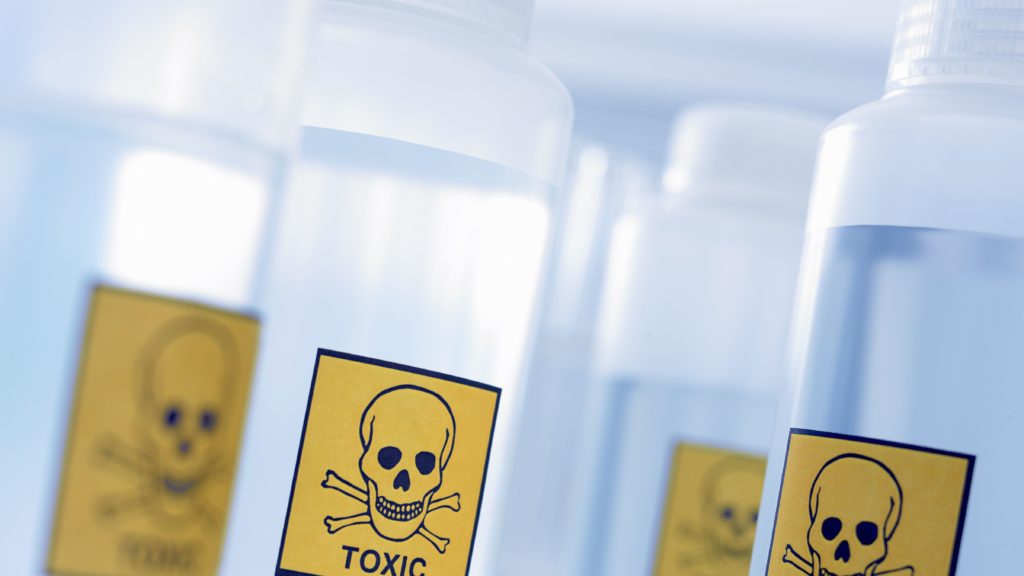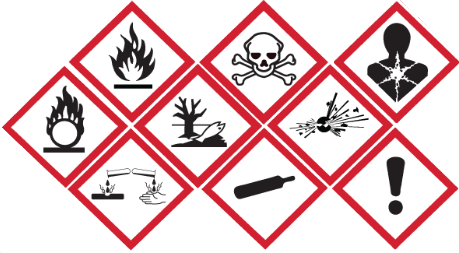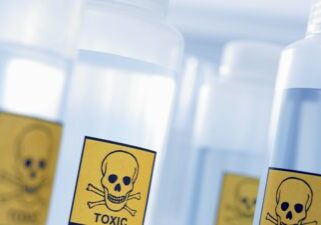Hazardous Substances: Asbestos, Lead and Silica
Posted: Jun. 8, 2021

Introduction
This month we discuss awareness level training for workers not expected to be exposed to Asbestos, Lead, and Silica, but could conceivably encounter them in the workplace. A primary route of accidental exposure to these substances is from exposure to airborne particulates, or dust, generated from work activities when they are disturbed.

Asbestos
Asbestos is a naturally occurring mineral that was widely used in a variety of materials due to its strength, re and chemical resistance. Asbestos was used in many building materials including insulation, panels, wallboards, door and ceiling tiles, plaster, and caulking compounds. Asbestos was also widely used in gaskets, brake pads, valve packing, and sewer pipes. Asbestos is still used in some of these products.
If asbestos fibers are inhaled they can cause asbestosis, a progressive disease that causes lung scarring and shortness of breath, lung cancer and mesothelioma, a cancer of the chest or abdominal cavity linings. It may take from 10 to 50 years for these diseases to occur after exposure.
Any work performed on existing structures, installations or equipment must be evaluated for the potential of exposure to asbestos. All jurisdictions have very comprehensive legislation dealing with exposure and potential exposure to asbestos, which include worker health assessments.
Lead
Lead is a malleable, low melting point bluish-grey metal that is the most widely recycled metal worldwide. Lead has been used in lead-acid batteries, piping, metal alloys, as a pigment and anti-corrosive agent in paints, and as a stabilizer in plastics. Lead use in consumer paints has been restricted by legislation but it is still widely used in industrial applications. Because of its low melting point, and use in metals, hot work involving lead can produce hazardous vapours and mists. Short-term exposure to high levels of lead produces a variety of acute effects including anemia and central nervous system dysfunction. Lead accumulates in the bones and is a blood, nerve, and reproductive system toxin. Long-term exposure to low levels of lead can lead to chronic effects. Recent research may indicate adverse health effects at very low exposures.
Any work performed with or on lead-containing materials including paint, pigments, and coatings can result in hazardous exposures. Abrasive blasting of paint and coatings and hot work on lead-containing materials are of particular concern. Medical monitoring of lead-exposed workers, including blood lead levels, is required to protect workers from acute and chronic effects of lead exposure.
Silica
Silica is made from silicon and oxygen and is a very abundant mineral in the earth’s crust. The form of silica of greatest concern for health hazards is crystalline silica, of which quartz is the most commonly encountered form. Silica dust may be produced during construction-related activities such as bricklaying, stone setting and demolition, and concrete materials repair. It is also produced during rock drilling, dry sweeping, abrasive blasting, quarrying, and mining. Silica dust may be produced during construction-related activities such as bricklaying, stone setting and demolition, and concrete materials repair. It is also produced during rock drilling, dry sweeping, abrasive blasting, quarrying, and mining.
Inhaling silica dust particles small enough to enter the lungs can cause silicosis, lung cancer, and chronic obstructive pulmonary disease. Silicosis is a progressive disease resulting from scarring of the lungs and can develop up to 10 years after exposure, even if the exposure has stopped.
The control of silica-containing particulates is under increasing scrutiny and new legislation is mandating hazard assessments and control measures at lower levels of exposure.
Best Practices
Your hazard assessments should always evaluate the potential toxicity of any particulates and dust that your workers may be exposed to. A program of dust control should be instituted as a best practice. Whenever you are working with unknown materials you must evaluate whether these might contain hazardous substances to which workers might be exposed if they are disturbed in any way. Refer to the applicable legislation in your jurisdiction. All potentially exposed workers should be provided with awareness level training for asbestos, lead and silica.
The following sources were used and may be consulted for additional information:
- Alberta OHS Bulletin CH059 – Crystalline Silica at the Work Site
https://work.alberta.ca/documents/WHS-PUB_CH059.pdf - Alberta OHS Bulletin CH071 – Lead at the work Site
https://work.alberta.ca/documents/OHS-Bulletin-CH071.pdf - IMS Global Corp. HSM Chemical Hazards, Biological Hazards, and Harmful Substances (COP-008)
Please contact your IMS Global safety representative if you require any assistance with your hazard awareness programs.
A safety trainer in your pocket
Full safety program
Built by safety experts
Use it online, on any device

Related Articles

Safety Audits
Introduction This month we discuss awareness level training for workers not expected to be exposed to Asbestos, Lead, and Silica, […]
Read Article
Lower Explosive Limit – LEL
Introduction This month we discuss awareness level training for workers not expected to be exposed to Asbestos, Lead, and Silica, […]
Read Article







